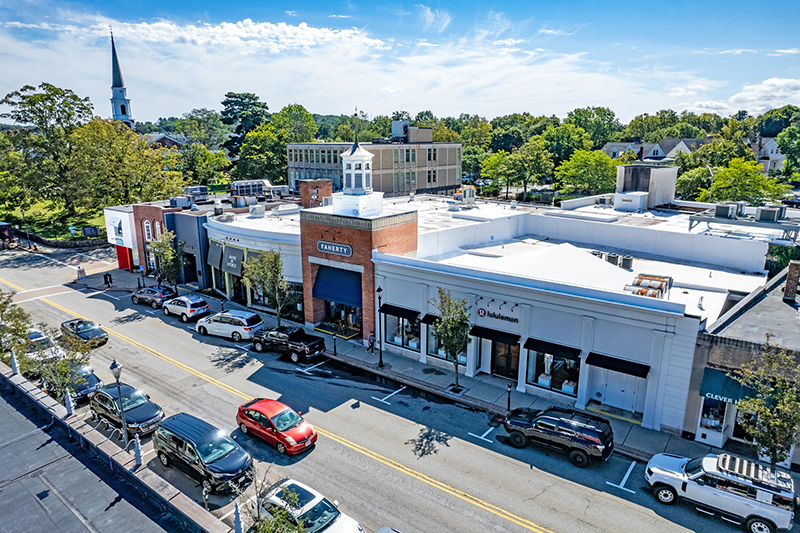

Wellesley, MA Newmark has facilitated the sale of 34-50 Central St., a collection of three boutique mixed-use buildings. Newmark co-head of U.S. Capital Markets Robert Griffin and managing directors Jonathan Martin and Paul Penman of the firm’s Boston Capital Markets Group represented the seller, EDENS, and procured the buyer, Taymil Partners. Additionally, Newmark vice chairman David Douvadjian, Sr., executive managing director Timothy O’Donnell and senior managing director David Douvadjian, Jr. of the firm’s Boston debt & structured finance group arranged financing on behalf of the buyer.



Totaling 40,860 s/f, 34-50 Central St. is presently 73% leased to a diverse tenant roster, including apparel brands Lululemon and Faherty plus health/fitness retailer Figurella, all of which recently opened on site.
“34-50 Central St. offers a ‘Main and Main’ location in the heart of downtown Wellesley,” said Martin. “The downtown Wellesley retail market has benefited from strong leasing demand and absorption in recent years, boasting some of the region’s highest leasing spreads and lowest vacancy rates.”
34-50 Central St. is situated at the corner of Central St., downtown primary thoroughfare, and Abbott St. This places the buildings one block from the MBTA commuter rail’s Wellesley Square station and adjacent to a 113-space public parking lot.
“The 34-50 Central St. sale generated a highly competitive bidding process that included local, national and global investors,” said Penman. “The wide range of debt options that were available to buyers during this process further underscores the demand for high-quality retail real estate — a trend that is only heightened in best-of-the-best markets like Wellesley.”
“We received significant interest from lenders to provide acquisition financing for Taymil Partners,” said Douvadjian, Jr. “Boston continues to be one of the best-banked markets in the country, especially for transactions with high-quality sponsors and exceptionally well-located assets such as 34-50 Central St.”
Newmark senior financial analyst Casey O’Brien provided financial analysis support for the transaction.
Danvers, MA KeyPoint Partners (KPP) negotiated a lease with the nation’s premier indoor pickleball venue The Picklr at Endicott Sq. Vice president of retail brokerage Don Mace negotiated the transaction on behalf of the landlord.